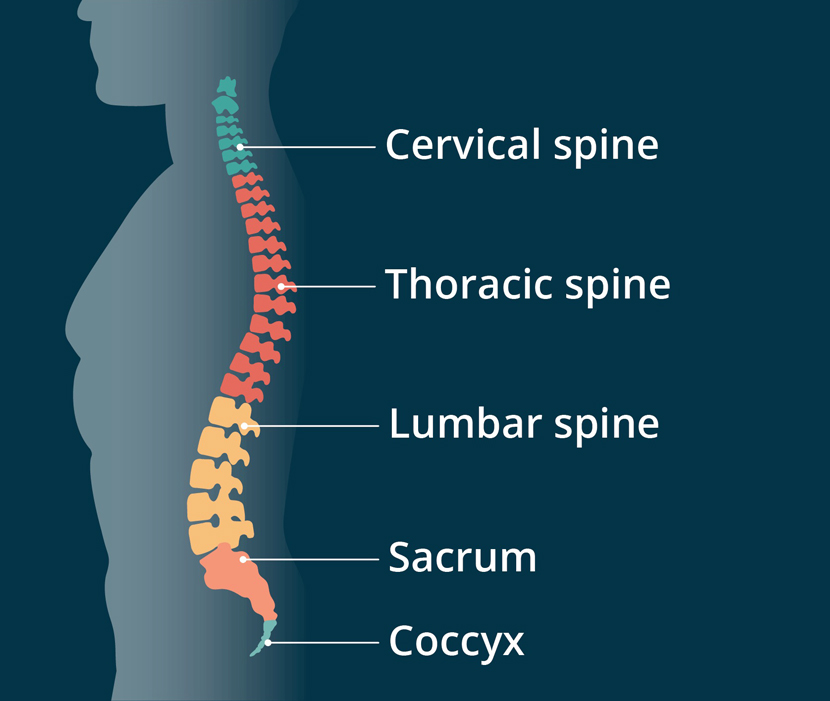
The spine, also known as the vertebral column or backbone, is one of the most important structures in the human body. It provides support, stability, and flexibility while also protecting the spinal cord—a vital part of the nervous system.
Structure of the Spine
a)The spine is made up of 33 vertebrae, which are divided into different regions:
b) Cervical Spine (Neck region – 7 vertebrae) – Supports the head and allows movement.
c) Thoracic Spine (Upper back – 12 vertebrae) – Connects to the rib cage and protects the chest organs.
d) Lumbar Spine (Lower back – 5 vertebrae) – Bears most of the body’s weight and allows flexibility.
e) Sacrum (5 fused vertebrae) – Connects the spine to the pelvis.
f) Coccyx (Tailbone – 4 fused vertebrae) – Provides attachment for ligaments and muscles.
Between each vertebra are intervertebral discs, which act like shock absorbers, cushioning the spine during movement.
• How the Spine Provides Support
• Weight Bearing: The lumbar region carries most of the body’s weight, especially when lifting or bending.
• Movement and Flexibility: The spine allows bending, twisting, and stretching while maintaining balance.
• Protection: The vertebrae encase the spinal cord, safeguarding it from injury.
• Posture: The natural curves of the spine (cervical, thoracic, lumbar) help distribute body weight evenly, preventing strain.
Supporting Structures Around the Spine
The spine does not work alone. It is supported by:
• Muscles: Core, back, and abdominal muscles stabilize and move the spine.
• Ligaments: Strong tissues that hold vertebrae together and prevent excessive movement.
• Tendons: Connect muscles to the bones of the spine, aiding in controlled motion.
• Cartilage & Discs: Prevent bones from rubbing together and absorb impact.
Importance of Spine Health
A strong and healthy spine is essential for overall well-being. Poor posture, lack of exercise, or injury can lead to back pain,
slipped discs, or spinal deformities. Conditions such as scoliosis, herniated discs, and arthritis can affect spinal health.
Tips for Maintaining Spine Support
1. Practice good posture when sitting, standing, or walking.
2. Exercise regularly, especially strengthening the core muscles.
3. Lift properly—bend your knees, not your back.
4. Maintain a healthy weight to reduce pressure on the spine.
5. Sleep on a supportive mattress to keep the spine aligned.
- In summary:
The spine is more than just a backbone—it is the pillar of the body. Supported by muscles, ligaments, and discs, it ensures stability, flexibility,
and protection for the nervous system. Taking care of your spine is key to maintaining a pain-free, active, and healthy life.